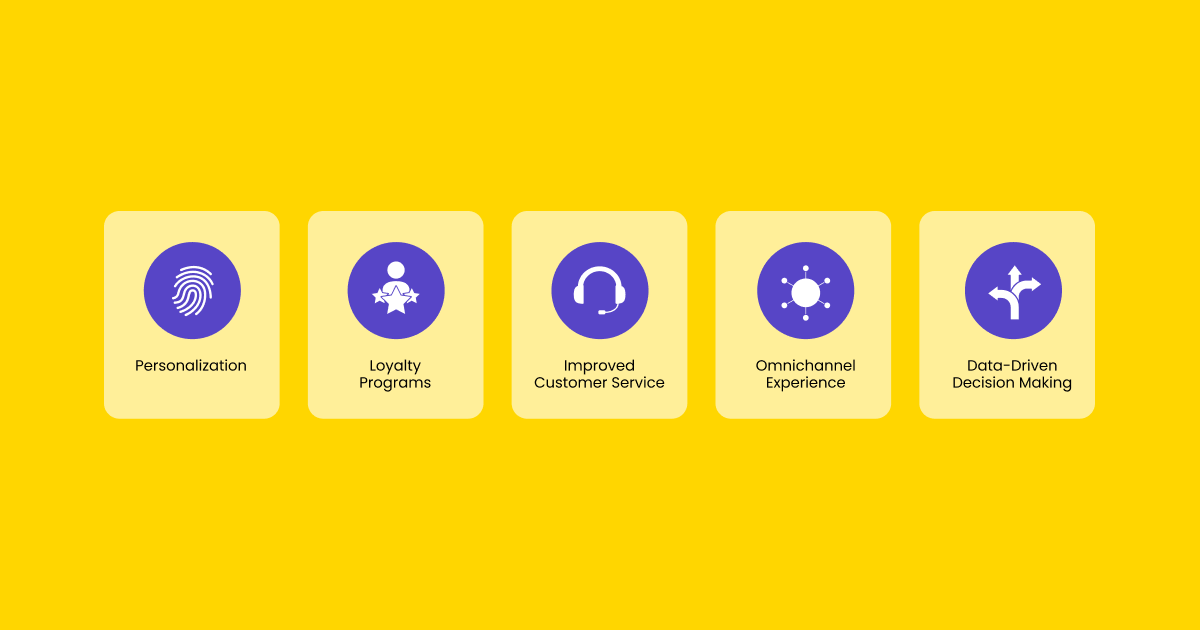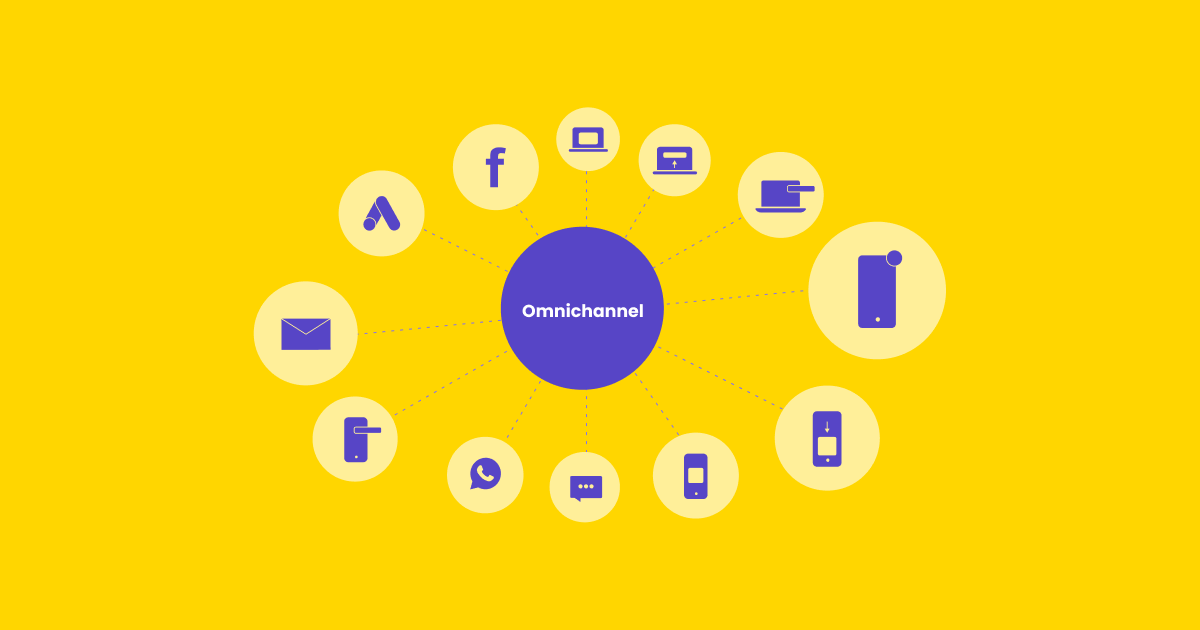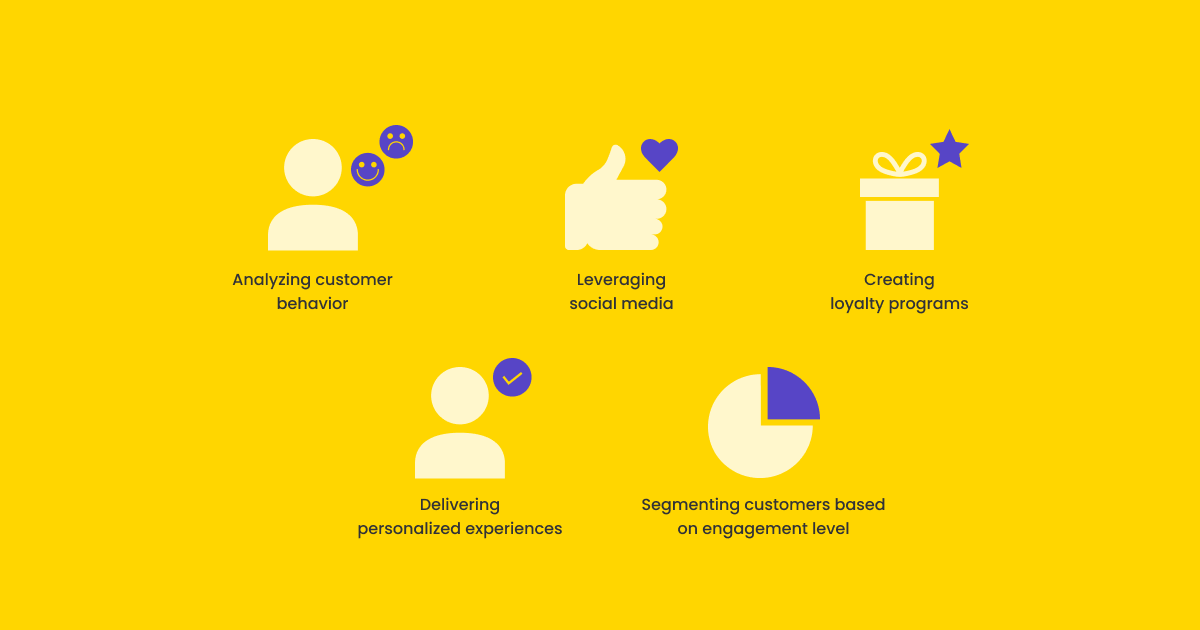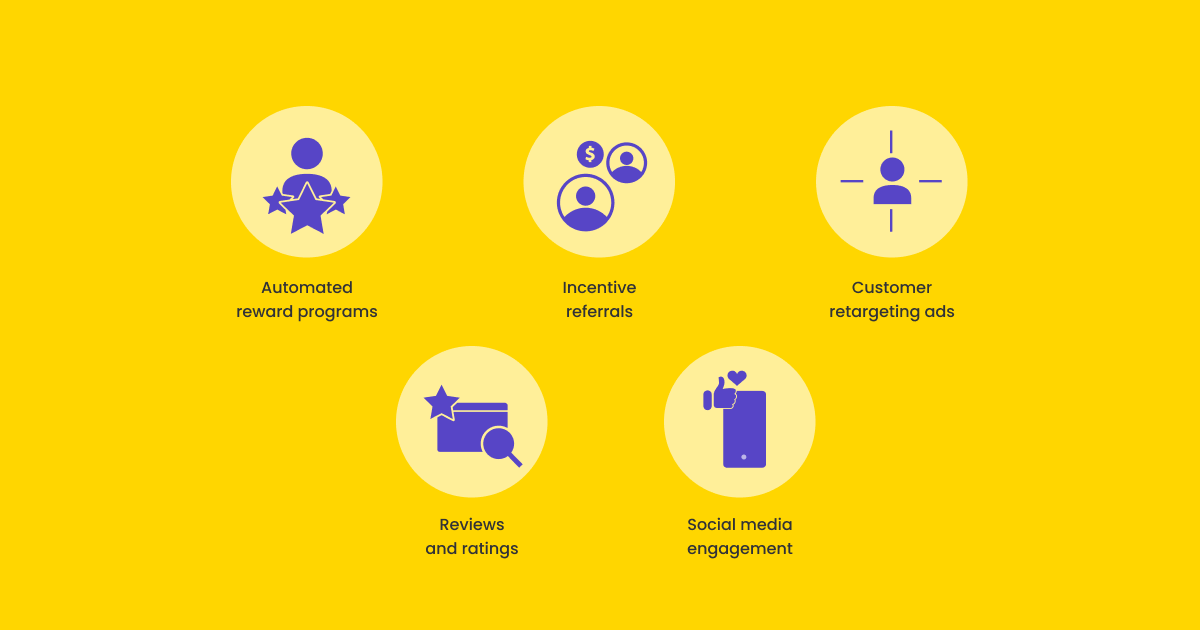Introduction
Customer retention is the process of turning one-time customers into repeat customers and brand loyalists through engagement campaigns and strategies. It involves providing excellent customer service, offering loyalty rewards and discounts, and staying in touch with customers through email, push notifications, SMS, Facebook, Google, WhatsApp, and other channels. Customer retention aims to increase customer satisfaction and encourage customers to return for more purchases.
The importance of customer retention for e-commerce businesses in the current competitive environment cannot be overstated. Customer loyalty is essential for any e-commerce business, as it helps to generate repeat purchases and visitor referrals—both of which are powerful sources of revenue. Retaining customers is also important from a cost perspective; acquiring new customers can be expensive compared to the marketing costs associated with keeping existing ones. A strong customer retention strategy also provides opportunities to upsell and cross-sell products or services, leading to increased profitability over time. By developing relationships with customers and demonstrating an understanding of their needs, e-commerce companies can create positive experiences that attract new customers and encourage loyalty among existing ones.
In this blog, we are going to examine the different strategies and use cases of customer retention in e-commerce businesses.
Strategies of customer retention for e-Commerce businesses
Customer retention in e-commerce businesses can largely be attributed to effective engagement strategies. These strategies include offering discounts and reward programs, creating personalized experiences, providing excellent customer service, using targeted email campaigns, and offering loyalty programs.
Discounts and reward programs allow customers to save money while feeling valued and appreciated. Creating personalized experiences makes customers feel more engaged and connected to the brand. Providing exemplary customer service builds trust between customers and the business. Targeted email campaigns help companies keep in touch with their customers without being overly intrusive. Lastly, loyalty programs foster a sense of commitment between customers and the business by providing rewards for continued patronage over time.
We’re going to examine a few of these strategies in this section:
1. Personalization
Personalization can improve customer retention in e-commerce businesses by providing customers with a bespoke experience tailored to their individual needs. This could include personalizing website content, product recommendations, offers, and personalized customer service. By providing customers with a unique experience, businesses create an environment of loyalty and engagement which increases the likelihood of customer retention. Understanding customer preferences enables the personalization of communications that helps businesses build the strongest possible relationship with their customers.
One well-known example of an online retailer using personalization as a tactic to increase customer retention is Amazon. Notice how no two users will have the same homepage. To cater to the shopping experience of each individual customer’s distinct preferences and behavior, Amazon employs a range of strategies, including personalized product recommendations and targeted email campaigns. This individualized strategy has helped Amazon cultivate a following of devoted customers and holds onto its position as the market leader in e-commerce in front of its competitors.
The benefits of personalization as a customer retention strategy for e-commerce businesses include:
- Customer Loyalty: Increased customer loyalty and repeat purchases due to customers feeling connected to the business and being provided with relevant product recommendations or content tailored to their interests.
- Understanding Customers: Better understanding customers’ needs so businesses can offer more personalized experiences, such as special discounts, offers, or promotions.
- Breakthrough Engagement: Increased engagement with customers through personalized emails, notifications, and messages that are more likely to be opened and read.
- Excellent Brand Reputation: Improved brand reputation as customers feel more valued when they receive personalized communications from their shopping company.
Download Impact Story – Learn how E-Commerce Brand HNAK Witnessed A 67% Open Rate For Cart Abandonment Emails
2. Loyalty Programs
Loyalty programs for e-commerce businesses are rewards programs designed to incentivize customers to make repeat purchases from a company’s online and offline stores. These programs typically provide customers with points or discounts for every purchase they make, which can then be redeemed for free products, discounts on future purchases, free shipping, exclusive access to events and sales, and more. The goal of loyalty programs is to cultivate loyalty among customers who have already purchased and encourage them to buy more frequently.
Case Study on Sephora
Take Sephora, for example. One e-commerce business has employed reward programs to keep customers happy. Sephora’s Beauty Insider program members receive various advantages, such as special discounts, free gifts, and early access to new goods. By providing these benefits, Sephora encourages customers to shop with them more frequently and spend more money per transaction. In addition to establishing a feeling of community among Sephora’s devoted clients, the initiative has been effective in enticing new customers to sign up and begin buying.
How can loyalty programs impact customer retention?
Loyalty programs can significantly affect client retention in e-commerce enterprises, according to a number of studies. Here are some figures:
- Customers who participate in loyalty programs are 70% more likely to make subsequent purchases from a business, according to a survey by Smile.io.
- According to a report by Annex Cloud, loyalty program participants spend 12–18% more annually than non-members.
- According to a Yotpo survey, e-commerce companies who introduced loyalty programs experienced an average 16% boost in customer lifetime value.
3. Improved Customer Service
Good customer service is essential for customer retention in e-commerce businesses. Providing excellent customer service will help build loyalty and trust among customers, leading to positive experiences that can encourage them to return and shop again. Good customer service helps create a positive image of the business and results in higher levels of satisfaction and brand loyalty. Additionally, good customer service can help reduce customer complaints and refunds while also increasing cross-sell opportunities. In short, good customer service is important in keeping customers happy, satisfied, and returning to make further purchases.
Strategies for Improving Customer Service
Some strategies to improve customer service and the customer experience in e-commerce businesses include:
- Offer a professional and reliable customer service team: Hiring knowledgeable, responsive, and friendly staff can go a long way in creating satisfied customers.
- Provide an intuitive user experience: Make sure the e-commerce business website is designed to be easy to understand, with all information presented in an organized and straightforward manner.
- Utilize automated customer service tools: Automating customer service tasks such as order confirmations, follow-up emails, and shipping notifications frees up valuable time for customer service teams to focus on more complex issues or complaints.
- Allow customers to track their orders: The ability to track their orders or shipments will allow them to stay informed throughout the entire process and reassure them that their package is on its way.
- Embrace social media channels: Social media channels such as Twitter, Facebook, and Instagram are great ways to connect directly with customers and gain insight into what they desire from your e-commerce business.
- Implement user feedback systems: Allowing users to give feedback about your products or services can provide invaluable insights into how you can improve your customer service experience in the future.
Benefits of good customer service for customer retention
- Good customer service boosts customer retention in e-commerce businesses by keeping customers satisfied and promoting loyalty. Positive customer experiences lead to higher customer satisfaction, trust, and loyalty rates.
- By addressing the customers’ needs quickly, businesses can build good relationships with their customers and retain them for longer periods.
- It leads to more positive reviews from customers, which, in turn, attract more potential customers as well as improve search engine rankings for the business’ website.
- Finally, it reduces customer churn rate because happy customers are less likely to switch providers even if presented with a competitive offer from another provider.
4. Omnichannel Experience
An omnichannel experience in the context of e-commerce businesses is one that provides customers with a seamless shopping experience across multiple channels. These channels could include online and offline stores, mobile apps, social media, and more. Omnichannel experiences aim to provide customers with a personalized and convenient shopping experience regardless of their channel. This can be accomplished through prompt communications, product availability updates, shipping updates, personalized recommendations, round-the-clock customer service, etc.
How an omnichannel experience can improve customer retention:
An omnichannel experience can improve customer retention for e-commerce businesses in a few ways. First, customers will be able to access and purchase products across multiple platforms, such as online, in-store, or through mobile apps. This allows customers to shop conveniently and elevates the shopping experience. Additionally, an omnichannel approach can help streamline customer service and support processes by simplifying customers getting help or returning products. Finally, it provides companies with more customer data that can be leveraged to personalize future marketing efforts and target repeat shoppers more successfully.
Examples of e-commerce companies successfully using omnichannel experiences for customer retention
Here are three instances of e-commerce businesses that effectively leverage omnichannel interactions to keep customers:
- 1. Nike: Nike is renowned for its creative application of technology to offer clients a seamless omnichannel experience. Customers can make online purchases, look up product reviews, and schedule in-store appointments, among other things, using the Nike app. Additionally, Nike offers a virtual try-on experience for customers using augmented reality technology.
- 2. Best Buy: Online buying is combined with in-store pickup and returns, thanks to Best Buy’s omnichannel approach. Customers can now shop online, pick up their purchases at a nearby store, and, if necessary, return items in person. Additionally, Best Buy provides a price-matching promise, which fosters repeat business.
- 3. Sephora: Sephora combines its online and in-store offerings to give customers a customized, cross-channel purchasing experience. Customers can use the Sephora app, for instance, to schedule in-store appointments, get product recommendations, and accumulate reward points. In order to entice customers to try new items and maintain a relationship with the company, Sephora also provides free samples with every purchase.
In general, these e-commerce businesses leverage omnichannel experiences to offer customers a smooth and practical buying experience, which aids in fostering loyalty and retaining customers over time.
5. Data-Driven Decision Making
Importance of data in customer retention
The importance of data in customer retention for e-commerce businesses is critical. It allows businesses to track their customers’ buying behavior, preferences, and needs to identify improvement areas. Data helps businesses develop strategies to better engage with customers and build relationships that foster loyalty. Data can also be used to gain valuable insights into customer buying patterns, allowing businesses to target specific marketing campaigns that are tailored to the individual customer’s interests. By using data analysis to study customer behaviors, e-commerce businesses will be more likely to retain their existing customers as well as attract new ones.
Studies have shown that data plays an important role in retaining customers for e-commerce businesses. Here are some key findings:
- A study by Epsilon found that 80% of consumers are more likely to do business with a company that offers a personalized experience.
- A report by Salesforce found that 52% of consumers are likely to switch brands if a company doesn’t personalize their communication with them.
- According to a study by McKinsey & Company, companies that use data to personalize the customer experience can increase customer lifetime value by up to 30%.
- A report by Segment found that businesses that prioritize data management and personalization see a 19% increase in customer retention rates.
Strategies for using data to make informed decisions
Data is critical for an e-commerce business. If there’s no data, there can’t be any decisions made. Here are the top five ways to leverage data for customer retention in e-commerce businesses:
1. Analyzing Customer Behavior:
Analyzing customer behavior helps identify customer trends and preferences, which can increase customer retention in e-commerce businesses. This involves tracking customer buying patterns, browsing patterns, search queries, frequency of visits and any other interactions customers may have with the business.
2. Leveraging Social Media:
E-commerce businesses can leverage social media to collect data on customer preferences and interactions, which can then be used to create targeted marketing campaigns that will help drive customer retention.
3. Creating Loyalty Programs:
Loyalty programs are an effective way to reward customers for their loyalty and encourage them to return to the store more often. This strategy helps e-commerce businesses build relationships with their customers by providing rewards or discounts when they make purchases or reach certain milestones such as a certain number of orders placed or referring friends through social media channels.
4. Delivering Personalized Experiences:
Personalization is a critical aspect of the future of customer retention. Delivering personalized experiences is a powerful way to engage customers and keep them coming back for more. Businesses can use data collected from previous purchases, interaction with ads and engagement on social media platforms to tailor content that appeals specifically to each individual customer’s interests.
5. Segmenting Customers Based on Engagement Level:
Segmenting customers based on their level of engagement allows e-commerce businesses to better target content for different types of buyers and focus resources where it matters most in terms of keeping customers engaged over time.
Benefits of data-driven decision-making for customer retention
Data-driven decision-making in e-commerce companies provides a number of benefits for customer retention, including:
- Improved product personalization – Data-driven decision-making enables companies to better understand their customers’ preferences and behaviors in order to personalize products and services. This allows them to increase customer satisfaction and loyalty.
- More efficient marketing campaigns – By utilizing data analytics, e-commerce companies can create more targeted marketing campaigns that are designed to reach the right people at the right time with the best offer or message.
- Enhanced customer insights – E-commerce companies can use data to gather insights about their customers’ needs and preferences as well as their buying patterns and behaviors, which can help them create more effective strategies for customer retention.
- Optimized pricing strategies – Through data analysis, e-commerce companies can review sales trends and identify profitable opportunities for pricing optimization. This allows them to maximize revenue while keeping customers satisfied with competitive prices.
Download Impact Story – Learn how ApnaKlub boosted its user retention and drove over 30% Month-on-Month repeat orders
Top 5 use cases of Customer Retention Strategies

1. Automated Reward Programs
Automated reward systems offer benefits for returning clients, encouraging them to make more frequent purchases. This might entail rewarding customers with points for each purchase that they can use on subsequent purchases or rewarding customers with coupons and discounts once they reach predetermined milestones, like the quantity of times they have made purchases from your website or a specific amount spent overall on all orders.
The following three online retailers use automatic incentive systems to retain customers very well:
- Ulta Beauty: Ulta offers points to customers for each purchase they make through their rewards program, which may then be redeemed for savings on future purchases. Additionally, Ulta employs tailored discounts and recommendations to keep clients interested in the program. Top-tier members also receive access to special promos.
- Target: Customers can receive personalized offers based on their shopping preferences and savings on purchases through Target’s Circle rewards program. Target also employs a tiered rewards program that allows customers to accumulate more bonuses and privileges when they make larger purchases from the business.
- Amazon: Amazon is another online retailer that uses automatic incentive systems to keep customers. Members of Amazon’s Prime membership program receive free and quick shipping, access to exclusive discounts and deals, as well as additional advantages, including cost-free music, movie, and TV show streaming. These benefits enable Amazon to entice customers to sign up for and maintain Prime memberships, which in turn increases customer retention and lifetime value.
Overall, these e-commerce companies use automated rewards programs to incentivize repeat purchases and build customer loyalty over time. By offering personalized rewards and offers, they are able to keep customers engaged with the brand and encourage them to continue shopping with them in the long term.
2. Incentive Referrals
By paying current customers for referring others to your website by providing promotional codes or by giving them bonuses for successful referrals, an incentive referral program is an efficient approach to increase customer retention (i.e., offering them points or money when someone signs up using their referral link). The referral program is advantageous to both parties since it provides current consumers with something extra for marketing your business while also providing a chance to attract new customers and boost sales.
The following three online retailers use incentive referrals as a client retention strategy:
- Dropbox: For each referral resulting in a new customer sign-up, it gives its users free storage space. The company has increased its user base and kept its current consumers by using this incentive referral scheme.
- Glossier: To obtain a discount on their subsequent purchase, Glossier gives its clients a referral code that they can give to their friends and family. In exchange, the previous client who recommended the new one also gets a discount on their subsequent purchase. This initiative has aided Glossier in expanding its clientele and cultivating a devoted following of brand evangelists.
- Harry’s: For each new customer they refer, Harry’s, a retailer of men’s grooming items, offers its clients discounts and free merchandise. Harry’s has benefited from this initiative by increasing the number of new customers it receives and keeping its current ones by rewarding them for referring friends and family.
In general, these e-commerce businesses employ incentive referrals to encourage their current customers to refer new clients to the business, which helps to expand their clientele and keep their current clients. They can turn their current consumers into brand ambassadors and increase customer retention over time by providing referral incentives.
3. Customer Retargeting Ads
Customer retargeting advertisements locate visitors who have already visited your website but have not yet performed the desired action by using cookies and tracking pixels stored in web browsers (i.e., making a purchase). You can target them with personalized messages about products they may be interested in based on their prior browsing activity on your website through various ad platforms like Google Ads and social media networks like Facebook Ads, ultimately bringing them back and encouraging them to convert into paying customers.
Here are three online retailers that successfully retain customers by using customer retargeting ads:
- Adore Me: Adore Me reminds customers about things they’ve shown interest in but haven’t bought via customer retargeting advertisements. Adore Me can maintain its top-of-mind brand and entice customers to return to the website to complete their transactions by retargeting advertisements.
- Amazon: Amazon shows customers things they have looked at on the site or put in their basket but haven’t purchased using customer retargeting ads. Amazon can remind customers of what they’ve expressed interest in and entice them to return to the site to finish their purchase by retargeting advertisements.
- Zappos: Zappos displays products to customers who have visited the website but haven’t made a purchase via customer retargeting advertisements. Retargeting advertisements help Zappos maintain brand awareness and entice customers to finish their purchases by driving them back to the website.
These e-Commerce businesses use client retargeting advertising to remind customers about things they have expressed interest in but haven’t purchased, which promotes customer retention and raises the probability of subsequent purchases. They can keep their brand at the forefront of customers’ minds and entice them to return to the website to finish their transaction by using retargeting adverts.
4. Reviews and Ratings
Reviews and ratings from customers offer insightful commentary about your goods and services, fostering trust among both existing and potential customers. Many e-commerce websites include user reviews with a five-star rating so that potential customers can immediately see how well-liked an item is before determining whether or not they want to purchase it from you. Additionally, positive reviews reassure customers that the products they’re purchasing are of high quality, which increases the likelihood that they’ll stick with you over time rather than looking elsewhere for their needs first.
Here are three e-commerce websites that have found success in keeping customers by utilizing evaluations and ratings:
- Amazon: One of the most well-known online retailers, Amazon, employs reviews and ratings to retain customers. Shoppers who have purchased a product can post reviews and ratings, which can assist other customers in their decision-making. Amazon is able to establish credibility and trust with its customers by giving them a place to voice their ideas. This can lead to a rise in the number of repeat purchases.
- Etsy: Etsy encourages customers to post reviews and ratings for their purchased goods as part of a successful customer retention strategy. Additionally, Etsy offers a channel for customers to get in touch with merchants directly, which can promote trust and long-lasting connections.
- Chewy: Chewy allows customers to submit reviews and ratings for things they’ve purchased as part of a successful strategy for client retention. Chewy also follows up with clients via emails to ask them to submit reviews after making a purchase, which can assist in boosting customer engagement and promoting repeat business.
Overall, these e-commerce businesses employ customer evaluations and ratings to retain customers by giving consumers a place to voice their ideas and interact with the brand. They are able to promote repeat business and cultivate long-term relationships with their clients by gaining their trust and credibility.
5. Social Media Engagement
For e-commerce businesses, social media is a terrific avenue to engage with both current and potential customers by providing intriguing content and hosting freebies or contests that will help bring traffic back to your website. Additionally, companies can design special social media promotions just for their followers, such as early access sales or flash sales, which would entice more people to visit their stores and strengthen the bonds between brands and customers.
The following three e-commerce businesses communicate with customers on social media to increase customer retention:
- Glossier: Glossier cultivates a network of brand evangelists on social media to increase client retention. The corporation has a significant presence on websites like Instagram and TikTok, sharing user-generated material and interacting with its fans. Glossier is able to promote repeat business and cultivate long-lasting relationships with its clients by cultivating a devoted community of followers on social media.
- Casper: Casper, a sleep solutions company, offers customer service on social media sites like Twitter and Facebook in order to increase customer retention. Casper is able to develop long-lasting relationships with its clients by responding to their questions and concerns on social media.
- H&M: H&M employs user-generated material on websites like Instagram and Twitter to increase client retention through social media interaction. Customers are encouraged to tag H&M in their social media postings featuring their ensembles, which the firm frequently reposts on its own channels. H&M is able to create a community of brand promoters and encourage repeat business over time by showcasing user-generated material and interacting with its fans on social media.
These e-commerce businesses employ social media engagement to increase customer retention by cultivating a strong social media community of brand evangelists, utilizing influencer relationships and user-generated content, and offering customer service on social media platforms. They may build long-lasting relationships and promote recurrent purchases by interacting with their customers on social media.

Conclusion
Customer loyalty is a crucial element of success for any e-commerce business. It helps create repeat purchases and referrals and increases profitability. If you want to increase customer retention for your e-commerce company, explore WebEngage. With our platform, you can collect data points that’ll help you understand your customers better and develop relationships with them. By providing positive experiences, you can encourage loyalty among existing customers and attract new ones. Start increasing customer retention for your e-commerce business today!
Deliver Meaningful Messages For Your Business Today, Request A Demo Now








 Dev Iyer
Dev Iyer
 Harshita Lal
Harshita Lal
 Inioluwa Ademuwagun
Inioluwa Ademuwagun